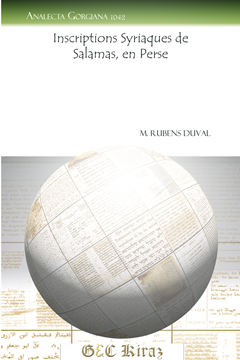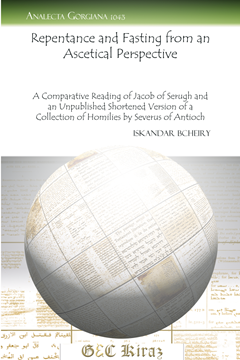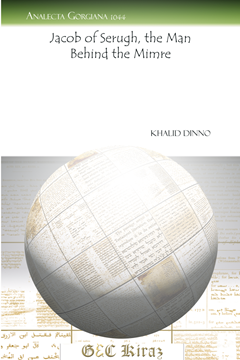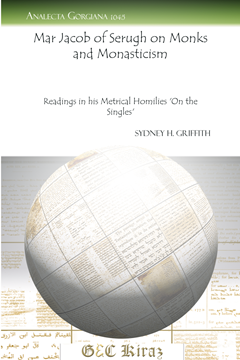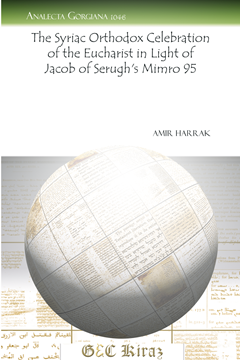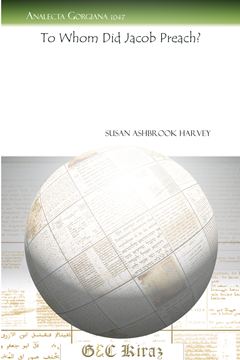Inscriptions Syriaques de Salamas, en Perse
Series: Analecta Gorgiana 1042
ISBN: 978-1-4632-0090-9
This publication presents the transcription and translation of eight Syriac inscriptions from the Persian region of Salamas found in ancient cemeteries and church buildings. The inscriptions are accompanied by brief commentary and helpful introduction.
$36.00 (USD) $21.60 (USD)
Repentance and Fasting from an Ascetical Perspective
A Comparative Reading of Jacob of Serugh and an Unpublished Shortened Version of a Collection of Homilies by Severus of Antioch
Series: Analecta Gorgiana 1043
ISBN: 978-1-4632-0091-6
Saints Jacob of Serugh and Severus of Antioch provided monastic interpretations for Syriac Orthodoxy. Bcheiry highlights St. Jacob’s exegesis of Jonah as a spiritual struggle with ascetic appearances. St. Severus address the movement from self-deial to purity in his Lenten homilies.
$37.00 (USD) $22.20 (USD)
Jacob of Serugh, the Man Behind the Mimre
Series: Analecta Gorgiana 1044
ISBN: 978-1-4632-0092-3
Credited by Dinno as the epitome of Syriac spiritual heritage, Mor Jacob of Serugh interpreted the physical world with the hidden realities of God. A prominent theme in Mor Jacob's mimre is the economy of salvation.
$35.00 (USD) $21.00 (USD)
Mar Jacob of Serugh on Monks and Monasticism
Readings in his Metrical Homilies ‘On the Singles’
Series: Analecta Gorgiana 1045
ISBN: 978-1-4632-0093-0
Griffith discusses “On the Singles”, mimre by Mar Jacob of Serugh, for their reflections of Syrian monastic development. Following a biography and detailed literary analysis, Griffith examines the broader context of regional monastic literature for Mar Jacob’s possible influences.
$35.00 (USD) $21.00 (USD)
The Syriac Orthodox Celebration of the Eucharist in Light of Jacob of Serugh’s Mimro 95
By Amir Harrak
Series: Analecta Gorgiana 1046
ISBN: 978-1-4632-0094-7
Jacob of Serugh's “Mimro 95” details the significance of the Eucharist and spiritual benefit for participants. Harrak divides verses of this commentary in order to relate stages of liturgy within the Pre-Anaphoric and Anaphoric services of 6th century Syriac worship.
$36.00 (USD) $21.60 (USD)
To Whom Did Jacob Preach?
Series: Analecta Gorgiana 1047
ISBN: 978-1-4632-0095-4
The long career of Jacob of Serugh provides insights into Scripture and tradition expected by homilies as well as information about his audience. In this publication, Harvey discusses Jacob of Serugh’s concern for congregations to balance lifestyle and devotional obligations.
$34.00 (USD) $20.40 (USD)
